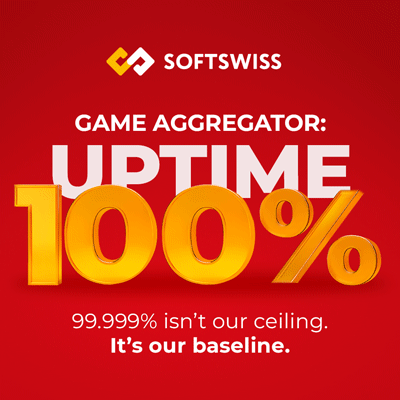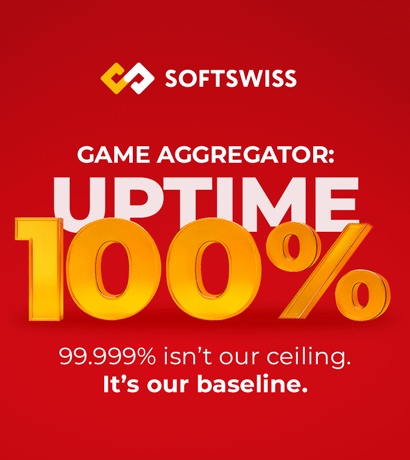With the iGaming industry intrinsically tied to technology, developments and advancements between the two elements have a continually cooperative effect. Evolving in parallel, many of the most popular and useful new systems in web technology have manifested in the online casino space. History is full of examples of the tech and iGaming relationship, but there are always questions about what comes next. With advancements in speed, input, and output, the next few years could open new worlds to the iGaming space, if the promise ends up being true.
Steps along the way
Before looking at what the future of iGaming tech developments could bring, it is important to map out the major steps that have driven the industry to its current levels of success. Valued at $57 billion in 2021, the online gambling market is expected to be valued at $154 billion by 2030, which would not be possible without savvy technological investment.
Starting in 1997, the first online casino games were simple by necessity. Operating with limited internet speeds and hardware power, the first titles were simple illustrations of slots and poker. While not graphically impressive by today’s standards, the fun of casino games has always found a foundation in gameplay. Graphics, while nice, simply were not necessary for those days to produce an enjoyable experience. This reality is what allowed the burgeoning online casino industry to survive the dotcom crash of the late 90s, and make its way into the new millennium.
 Continuing to expand and evolve in the early 2000s, the next big leap for online casinos came with the release of the iPhone in 2007. While not the first smartphone, Apple’s iPhone revolutionized the mobile market and introduced the world to the ability to play casino games from almost anywhere. Instead of needing a desktop or laptop, online casino games became accessible from a ubiquitous device, significantly expanding the player base.
Continuing to expand and evolve in the early 2000s, the next big leap for online casinos came with the release of the iPhone in 2007. While not the first smartphone, Apple’s iPhone revolutionized the mobile market and introduced the world to the ability to play casino games from almost anywhere. Instead of needing a desktop or laptop, online casino games became accessible from a ubiquitous device, significantly expanding the player base.
The last of the major steps came about with the death of Macromedia Flash. Formerly home to most interactive browser experiences, including casino titles, Flash was never a perfect solution, but it was flexible. Over time, it became bloated and problematic, and since HTML5 caught up to Flash’s potential, the software platform was dropped. The move to HTML5 made iGaming titles much easier to run on different systems, further lowering barriers to entry and widening player bases.
What could come next
Looking at the coming potential in iGaming, two major systems stand above the rest. These are virtual reality and augmented reality. Virtual reality is the most well-known of these technologies, and it is a system where integration could be easier to achieve.
In its current state, virtual reality is achieved through headset devices like the Oculus Rift. While it can be exciting to think of VR as full-immersion systems like you would see in something like The Matrix, that technology is so far off it is not worth considering seriously. Instead, the next step in VR is going to be devices that are less cumbersome, more powerful, and feature better field-of-views.
 There are some individual titles in iGaming that take advantage of VR already, like Starburst and Gonzo’s Quest VR. While impressive, these are individual titles, and the next step in VR would involve pushing this technology a step further. Instead of simple games, next-gen VR online casino tech could digitalize an entire casino.
There are some individual titles in iGaming that take advantage of VR already, like Starburst and Gonzo’s Quest VR. While impressive, these are individual titles, and the next step in VR would involve pushing this technology a step further. Instead of simple games, next-gen VR online casino tech could digitalize an entire casino.
Consider how this would change the online casino that already exists. The best casinos in a place like Michigan, for example, are already widely celebrated by players. These include huge selections of titles like slots and table games, as well as welcome bonuses, seasonal rewards, and much more. Available on mobile and desktop systems, adding VR into the mix could give yet another way to engage with these casino experiences.
Players within a VR casino could walk about freely, with friends if they wished, and take virtual seats at their virtual tables. Theoretically, they could even move the tables and machine placements around as they wished, creating a custom layout that best suited the games they liked the most.
Augmented reality would offer similar advantages only on a smaller scale. Specifically, when we talk about next-gen AR, we are discussing the type of AR systems like the Hololens, which act similarly to VR headsets. The difference is that AR superimposes items into real environments, while VR creates everything digitally.
In action, next-gen AR iGaming could place entire digital machines within your home, turning a space into your favorite slot game, for example. AR could also be hugely influential in live experiences, streaming the real dealer across a real or fake table for an extra level of realism.
Combined, the technologies of VR and AR represent another step in bridging the gap between physical and online casinos. With future applications, it could be possible to enjoy more of the sensory side of physical casinos while not abandoning the advantages which are only available with online systems.
With VR and AR casino applications, players would never have to worry about dress codes or travel costs. They wouldn’t be limited by how close they live to casinos, and some concerns about mobility and disability could be significantly reduced.
Offering such profound advantages, and with the technology growing ever-cheaper and more available, the integration of these new technologies is just a matter of time. The only real questions are who will be the first to make the leap, and how will this development affect the already massive growth of the digital industry.














